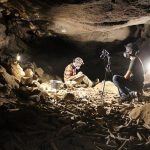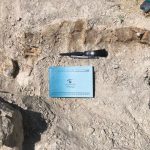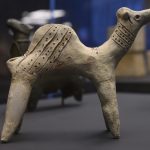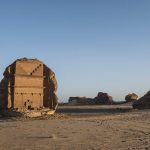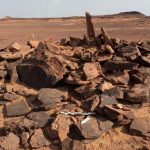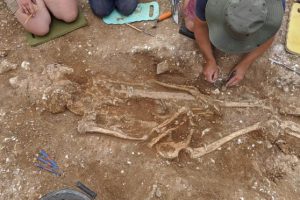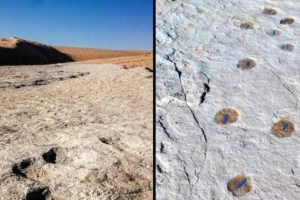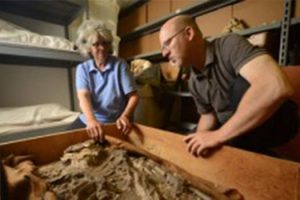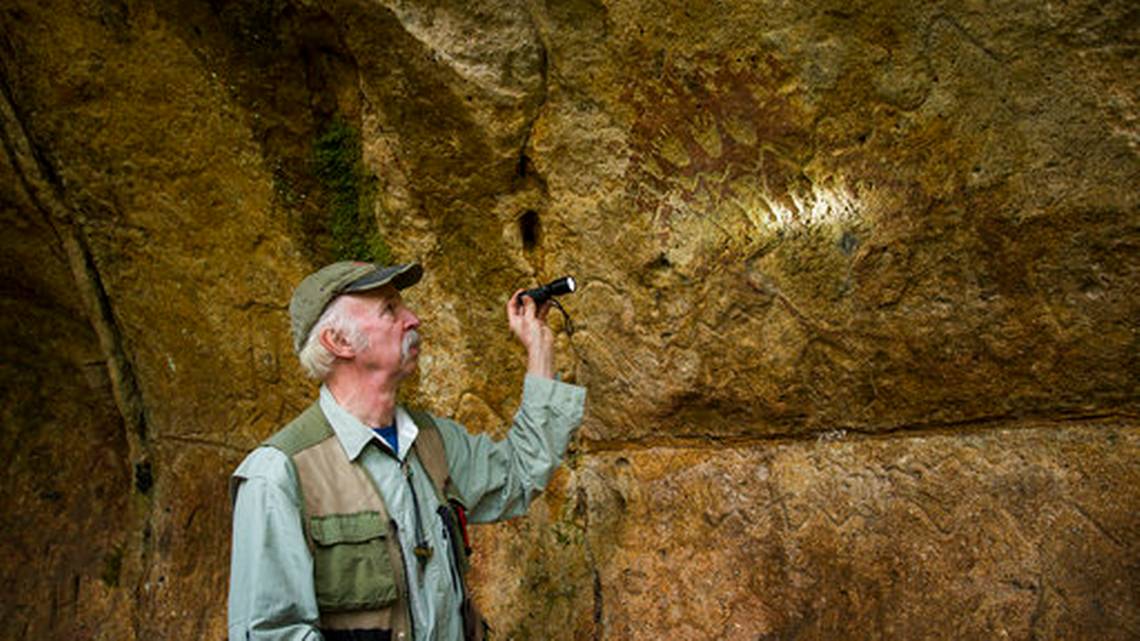
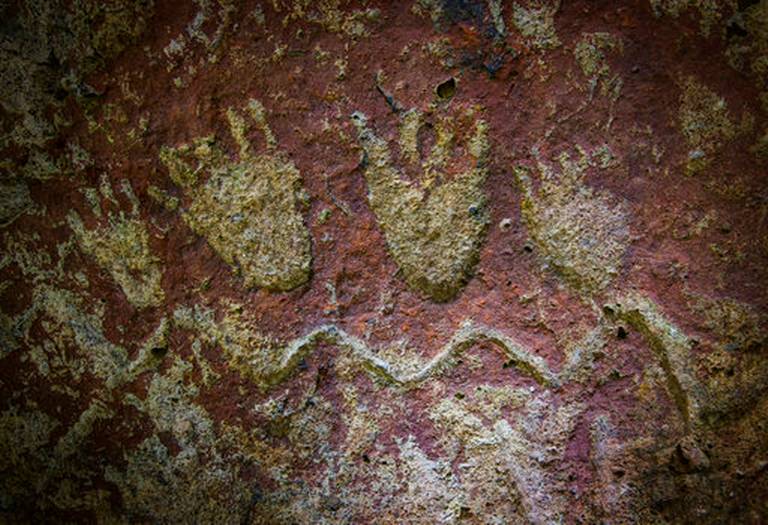
Only some of the petroglyphs catch the eye right away.
So Tony Farque held up a flashlight and clicked the button to trigger a strobe. Light flickered on the rock wall towering above him, revealing a hidden tapestry of carvings. Farque said the strobe light mimics the glow of pitch torches used by Native Americans who carved the mysterious etchings in the rock thousands of years ago.
“This is the largest and most complete rock art site in western Oregon by far,” said Farque, archaeologist for the Sweet Home Ranger District of the Willamette National Forest. “There is a lot here.”
During the past 25 years, Farque has led the hike to Cascadia Cave more than 450 times, introducing about 8,500 people to the special place. The site is about 60 miles northeast of Eugene off Highway 20.
Most of the 10 people who joined Farque earlier this month were part of The Archaeology Channel International Film Festival in Eugene. The festival is in its 15th year, and a trip to the cave — east of Sweet Home — has become a regular part of the program, giving festivalgoers a chance to see some archaeology in real life.
Hiking to Cascadia Cave required walking off trail and over logs. The cave, better described as an overhang or rock shelter, is on private property near Cascadia State Park and isn’t regularly open to the public.
During the outings, Farque asks visitors not to touch the precious art.
Part of the intrigue of Cascadia Cave is trying to determine what the petroglyphs depict, individually and together. Farque has been joined in the past by archaeologists, historians and leaders from the Confederated Tribes of Siletz Indians, Confederated Tribes of Grand Ronde and other tribes.
It wasn’t until his 150th trip to the cave, years ago, that a 9-year-old girl pointed out the shape of a large salmon on the rock wall. She was standing back from the wall, and some of the petroglyphs make part of the sacred fish, including its eye and gills.
Seeing the faintest of the carvings can take patience and perspective. Light from Farque’s flashlight — at just the right angle — helps, too.
“Sometimes you are too close to the wall,” Farque said. “Sometimes you are too far away.”
The annual archaeology film festival draws presenters and attendees from around the world. Rahul Narwane traveled to Eugene from India to be a part of the festival, showing his film, “The Undiscovered Heritage,”. He piled into an SUV to make the hourlong trek to Cascadia State Park and then walked a couple of miles to the cave.
While fascinated by the petroglyphs at Cascadia Cave, Narwane took equal interest in the surrounding lush forest.
“It’s a completely different landscape than India,” he said.
Farque stopped to point out old trees along the hike, including an 850-year-old Douglas fir.
But the cave was the main attraction. And Farque, who was an extra in the 1967 Western movie “The Way West,” told tales connected to the cave with flair.
Farque said Cascadia Cave is one of the three most important archaeological sites in Oregon. The other two are Celilo Falls, now underwater and held back by The Dalles Dam on the Columbia River, and Willamette Falls by Oregon City. Scientists have used carbon dating to determine that a fire pit found below 10 feet of dirt at Cascadia Cave is 8,000 years old.
Anthony Grieco, a filmmaker from Vancouver, British Columbia, found the cave’s petroglyphs remarkable. He said he has traveled to Italy to document cave paintings for his film “Shepherds in the Cave,” but hadn’t seen rock carvings before Friday.
Some of the art at Cascadia Cave is easy to decipher, such as images of bear paws. Other carvings leave room for interpretation, such as squiggly lines and dots.
He snapped photos of the petroglyphs with his smartphone, pausing to ponder between photos.
“I wonder how old they are?” Grieco said, noting the cave’s estimated age. “Are they older than that?”
The film festival’s director, Rick Pettigrew, said the field trip to Cascadia Cave is a chance to show festivalgoers a unique part of Oregon.
?(For) a lot of people, it’s the only time in their lives they’ll see rock art,” he said.
Cascadia Cave reminded Emily Foster of Corvallis that she doesn’t have to travel as far as Egypt’s pyramids or elsewhere around the world to see historically significant art. Her grandfather is a friend and former co-worker of Farque, so she tagged along to see the cave.
“It was a neat piece of history that was so ancient, but so close to home,” Foster said.
By DYLAN DARLING
from:idahostatesman

